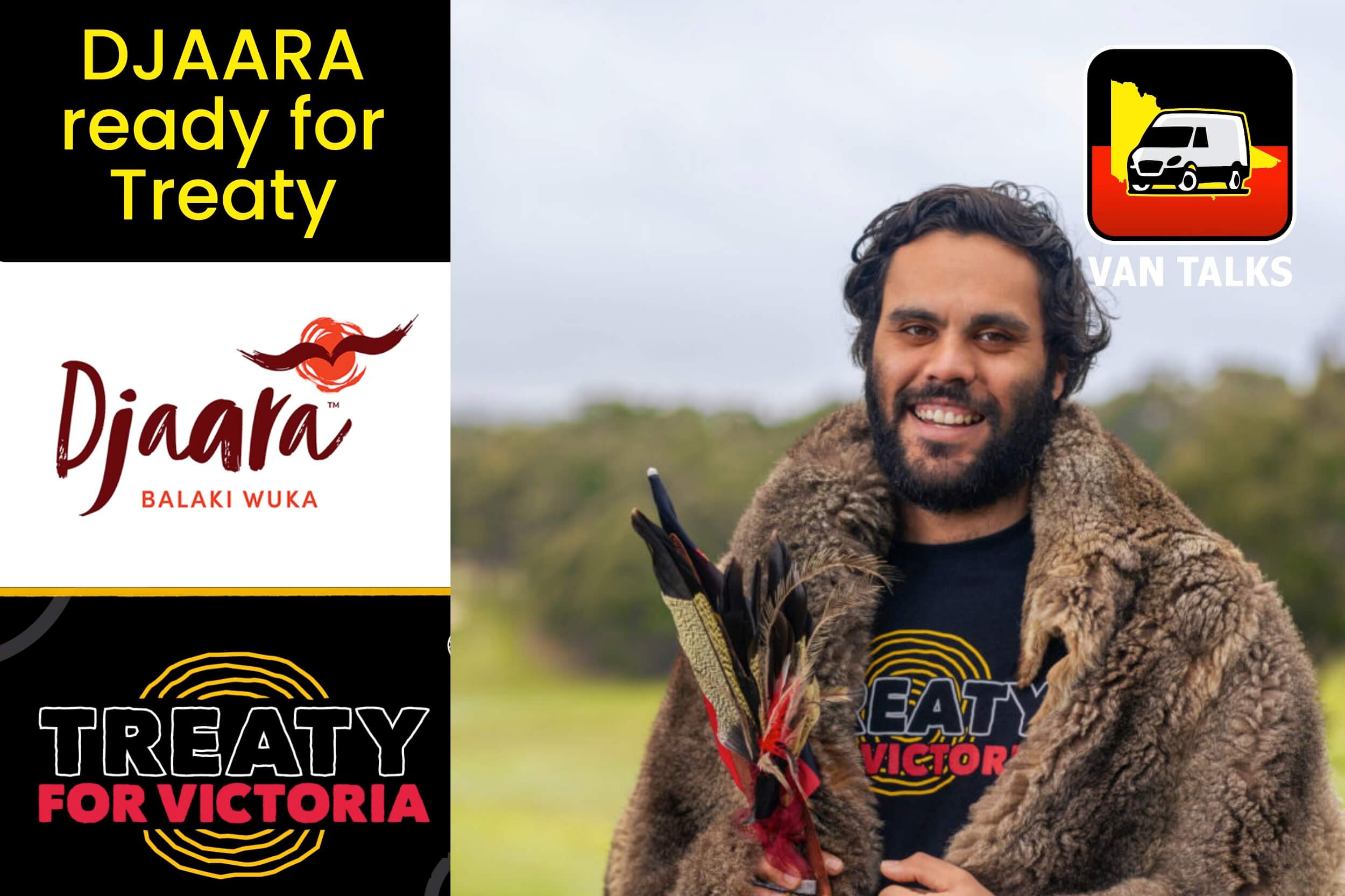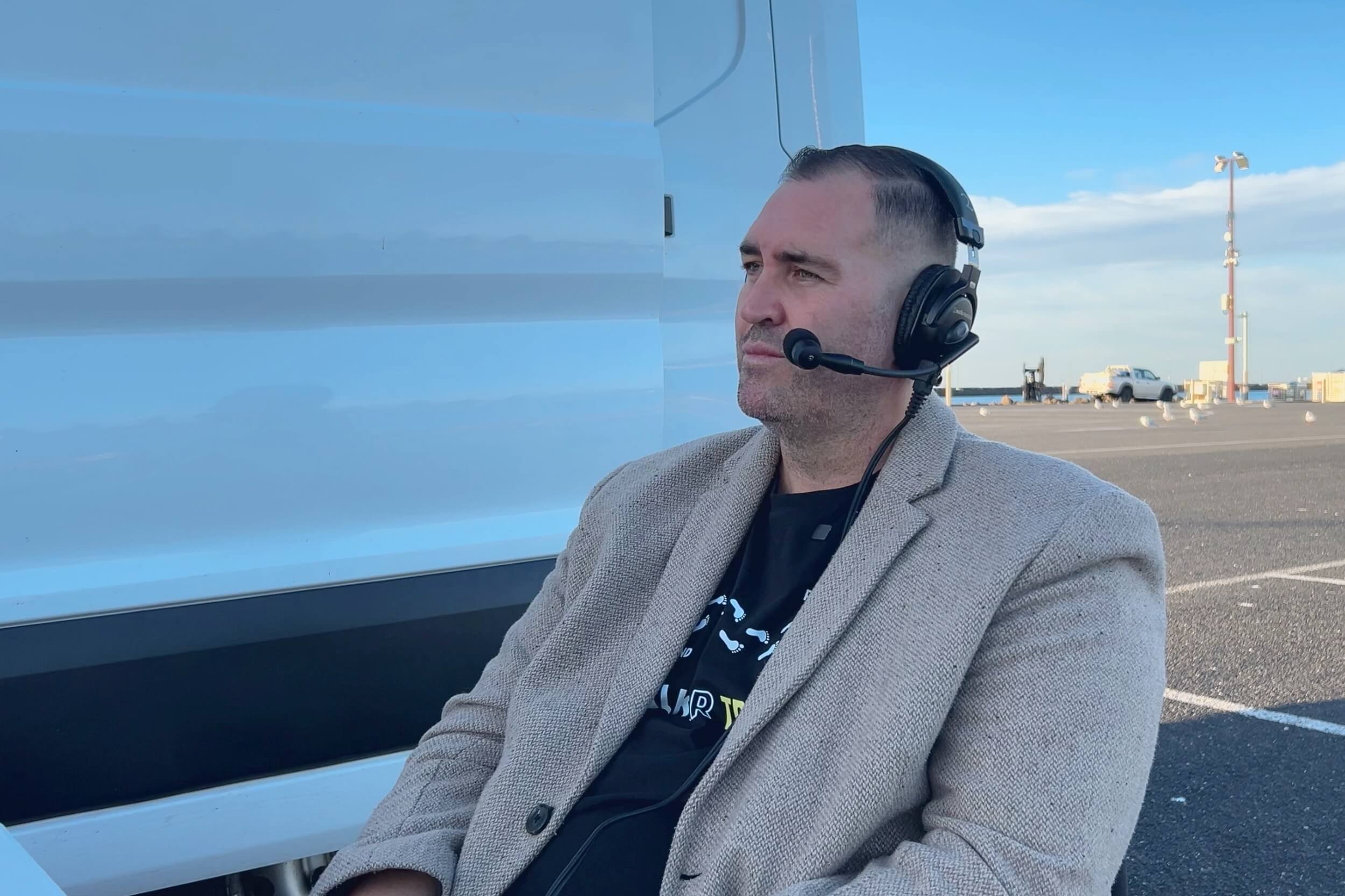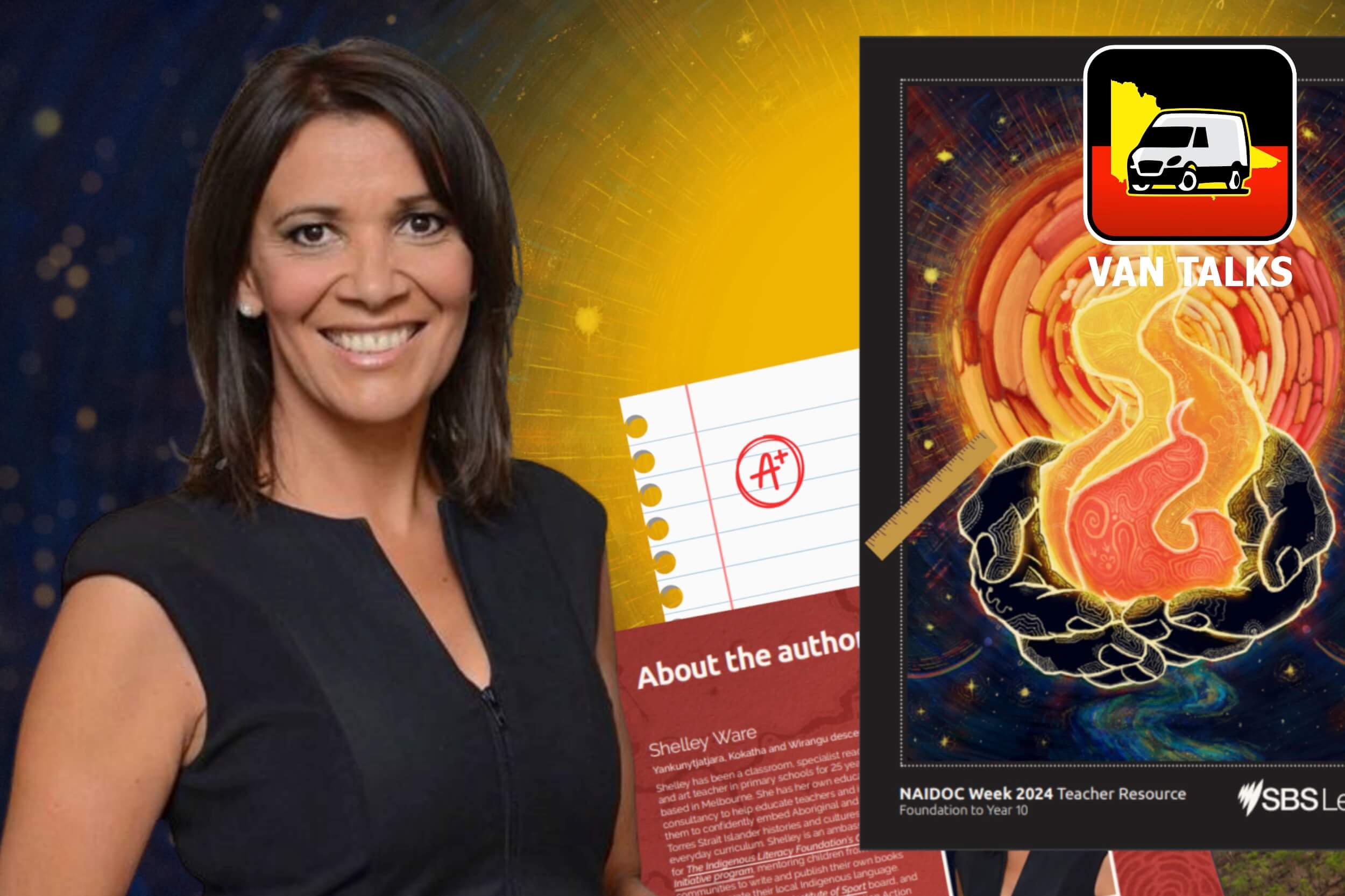Want more on this topic?
Charles Pakana (VAN):
Joining me today on the program as we follow up with this massive issue of the dingoes and the extension of the unprotection order by the state government through till 2028, and joining me today to talk about this is Professor Euan Ritchie. Euan is a professor of wildlife, ecology and Conservation at Deakin University. He’s also a member of the Biodiversity Council and President of the Australian Mammal Society. Euan, thanks for joining us today.
Professor Euan Ritchie:
My pleasure. Thank you.
Charles:
Euan, we’ve had a number of conversations prior to this and we really want to start off today’s conversation with understanding the role of the dingo in the Victorian environment.
Professor Ritchie:
Well, we know from ecology, we look all around the world that top predators, whether they be lions, whether they be sharks, crocodiles, they’re really important in the environment. And in the case of Australia, we only really have one large land-based predator left aside from we people, and that’s the dingo. And the important role that that predator has is kind of in two main ways. First of all, they eat herbivores, so kangaroos, feral goats, feral pigs, in some cases, deer. And of course those herbivores are running around eating vegetation. And if there’s too many of them that can actually change the habitat and make it less suitable for lots of other animals.
And so by dingoes eating those herbivores that keeps their numbers lower in check if you like, and that means that that environment is healthier and better for other animals. The other really important thing that they do is that they also in some cases kill other predators, smaller predators, and that’s foxes and cats. And foxes and cats were introduced to Australia by Europeans, post-colonisation, and they’ve had a devastating impact on Australia’s wildlife. So most of the mammal extinctions in particular are associated with feral cats and foxes. And so dingoes kill them in some cases because they see them as competitors.
And the fact that dingoes kill things like kangaroos and feral pigs, but also cats and foxes, it also means that those same animals try to avoid dingoes in the landscape. And that fear of dingoes is actually a positive thing because it means that they’re less active in certain areas. So imagine if you’re a bilby as an example, And you’re in the desert and there’s dingoes in the landscape, and that means that foxes and cats might avoid certain areas where dingoes are most active. That’s indirectly helpful to the bilby. So even if occasionally a dingo might eat a bilby, which they do, foxes and cats will eat lots more bilbies. So you’re actually better off as a bilby having dingos in the landscape.
Charles:
But they also are going to eat livestock, so they’re going to eat sheep, aren’t they? And lambs in particular, that’s a real problem.
Professor Ritchie:
That is absolutely true. And they’re particularly a problem for sheep graziers and goats. So cattle, bigger animals, more able to defend themselves. That’s not to say that dingoes don’t occasionally attack cattle and they can obviously harm calves, but cattle generally are less affected. But yes, sheep and goats, absolutely. And so that’s why we need to have ways of maintaining dingoes in the landscape, but also protecting livestock. And fortunately, we have the scientific tools and also the knowledge, cultural knowledge if you like, that’s come from places like Europe for thousands of years using other animals to protect livestock.
Charles:
Why do you think though, that given that there are other predators out there and other influences on the losses of livestock, particularly the sheep and the goats, why do you believe that it’s the dingo that’s being held up as the arch enemy?
Professor Ritchie:
It’s very visual. So obviously when dingoes do kill livestock, you can see the outcome of that in the paddock, and that might be quite distressing scenes of what happens to the sheep or the calves, whatever it might be. So I understand why people have a really emotional response to that. But the very fact of the matter is that if you think about things like sheep, we know that by far and away, the biggest cost in terms of lambs and lambs dying is weather. In particular, so really extreme like cold weather. And in some cases, bad genetics as well.
So we’re not denying that dingoes don’t kill livestock, they absolutely do. But if you look at the whole picture in terms of how much livestock they’re killing as opposed to losses that are occurring for other reasons, it’s a tiny fraction of the losses in particular. So I think we need to maintain perspective on this issue. I’m not for a second downplaying the fact that it is really emotional and traumatic when you see livestock that are being killed in your paddock. And we want to try and prevent that and we can prevent that.
But I don’t think we should be over-activating by saying, “Oh, dingoes have killed this many livestock, so we should get rid of all the dingoes.” And then we end up creating all these other problems like having lots of kangaroos in the landscape, which overgraze, and then we have to make decisions about, “Well, okay, we’ve got too many kangaroos. The kangaroos are starving themselves when we have droughts. What’s going to happen to them?” That’s a bad welfare outcome. And we also have issues like people having vehicle collisions and so forth with kangaroos because they’re really high in number. So we’ve created this own issue for ourselves by not working with nature. We work often against nature. That’s the problem.
Charles:
It seems like the pendulum is always going backwards and forwards, but never meeting nicely in the middle with the nice balance.
Professor Ritchie:
It’s like the story of the little boy putting his finger in the dyke. You plug one hole and then there’s another hole, then there’s another hole. That’s exactly what we are doing in these ecosystems.
Charles:
You made mention of the fact that whilst it is distressing, and we’ll also get later on to the distressing fact about the dingoes being baited and trapped, and that we will discuss that in a minute, but you made mention of the fact that it is being overplayed as a cause on livestock deaths. What are some of the other primary causes that you’ve seen regarding lamb and goat deaths?
Professor Ritchie:
Yeah. Well, the main reasons are bad environmental conditions. So obviously if you have a real extreme drought, obviously that’s going to really be challenging for livestock to survive. But particularly bad weather events. It’s really well known if you ask lots of graziers, what happens when you have really cold weather, extreme cold weather, they’ll say the lots of lambs die in the paddock. And that’s been shown in multiple government reports and so forth about the causes behind livestock loss. Dingoes are a tiny fraction compared to that.
Charles:
When you say tiny fraction.
Professor Ritchie:
A few per cent compared to the vast majority. I don’t have that number on me right now, but it’s a tiny fraction in comparison.
Charles:
Well, we’ve seen figures that say it’s around about 7-7.5%, but lower than 10%.
Professor Ritchie:
Exactly. Much lower. And so again, I’m not diminishing the fact that dingoes don’t have an impact. They do, but I think we need to maintain perspective on this and put it in context compared to all these other things that are causing livestock loss.
Charles:
Now, we’ve also seen evidence and research that shows that a lot of standard farming practices or extreme farming practices are leading to lambing deaths and baby goat deaths such as trying to breed for twins and triplets, which is working against because you’re going to get weaker offspring. Are these matters that you believe are being given enough profile in this whole story?
Professor Ritchie:
Yeah, I mean, I think animal husbandry and the genetics of your flock or your herd, whatever the animal is that you are farming, it’s really important. And interestingly, when I’ve worked in different parts of Australia, I’ve been fortunate enough to work across large parts of Australia working on dingoes, so up in Cape York, up in the middle of the arid centre, Western Australia. And I’ve spoken to a lot of graziers, and my experience has been that when graziers have really good lamb management practices in place already and good animal husbandry, they rarely talk about dingoes being an issue at all. So I think we need to protect livestock from the potential of dingoes attacking them.
But we can’t ignore the fact that if you have bad lamb management practices and animal husbandry, of course you’re going to have livestock loss. And if an animal dies in the paddock, but you don’t know what the cause is, there’s a temptation sometimes I think for some people to blame it on dingoes, but that doesn’t necessarily mean that they did. And of course, even if an animal dies in the paddock and then secondarily a predator comes along and decides to scavenge that animal and then they get blamed for it again, this is the problem. It’s a really hard thing to quantify reliably how many animals were genuinely killed by a dingo or in some cases foxes, particularly in the case of lambs. So yeah, we need to be honest and clear about that.
Charles:
We mentioned before that we’d talk about the baiting and the trapping of dingoes. We talked about the horror of seeing a lamb attacked by dingoes and other animals. But the reality is that the practices, many of the practices being put in place right now to control this, what they call the wild dog problem, are pretty draconian. When you look at the 1080 compound and the leg trapping, tell us a little bit about that and the real horror of that for the animal itself. And I will just warn the audience that this will be pretty stark.
Professor Ritchie:
Yeah, it could be categorised as being barbaric. So you mentioned 1080. So 1080 is a compound that is derived from a plant. Gastrolobium is the genus of that plant. It’s a naturally occurring substance in plants. And because native Australian animals have co-evolved, they have a tolerance, a quite high tolerance in most cases to that compound. Dingoes don’t. They’re a more recent arrival in Australia.
And so you can use that compound to kill dingoes, and it’s an agonising death and absolutely agonising death, and I wouldn’t recommend it to people, but there is images and videos online of people’s farm dogs as an example, that have accidentally taken a 1080 bait. And to see the trauma that those animals are experiencing as they die, there’s no antidote for 1080. So once they take that, there’s basically nothing you can do. And it’s excruciating to watch. And so as a conservation biologist, I always argued that our first thing that we should always be doing is do least harm. So if you are making the really difficult decision to kill an animal, it should be done in the most humane way possible. It should be quick.
1080 is not quick and humane. Now I don’t want to diminish the fact that 1080 has been in some ways a saviour for some native animal. So I mentioned the problem of cats and foxes before, particularly foxes. 1080 has been quite effective in some cases of controlling fox populations. And without that, we might not have numbats, we might not have bilbies and so forth. And so it has been used. Again, it’s a difficult choice to make because most conservation biologists I know don’t like harming animals. But it’s a difficult choice that was made between doing something or watching these native animals disappear because of these introduced species. But we can use 1080, I think in a really limited way if we have to. This idea of widespread baiting in some cases, aerial baiting as well, not so much.
Charles:
So how is it laid out?
Professor Ritchie:
Typically, in Victoria, it’s mostly put out on ground. So someone will drive along on a track, they’ll usually dig a small hole, put the bait in, which is usually inside like a meat bait, and then you put some sand or something over that bait. So it’s somewhat buried. But we also know from research that other animals dig those baits up. Crows can dig them up if they’re not too deep, native rodents will dig them up, goannas, all sorts of animals that can dig them up and then bring that bait to the surface. So that means it’s actually available not just to dingoes and foxes, but actually quite a wide range of animals.
And different animals have different tolerances to that poison. So it is a really problematic thing. And I also know lots of graziers personally too that don’t like 1080. Most people that go into farming, I would argue, have a love of animals. And if they can, they want to produce livestock in the most humane way, and they don’t like seeing animals suffer. So people are actually looking for solutions that are less draconian, less barbaric. And you also mentioned leg hole traps. So what happens is you have basically a trap that’s on the ground. It’s usually buried a little bit with a bit of sand, etc. Animal walks along and it gets its foot caught in that trap.
Charles:
That’s pretty indiscriminate though, isn’t it?
Professor Ritchie:
Yeah. So emus can get caught in there. Kangaroos can get caught in there, and potentially they can suffer injuries that may be either temporarily quite painful or in some cases to the point that it breaks their leg, in which case they’re going to die. They’re not going to recover from that. But some of those dingoes can be caught in those traps for hours or in some cases, which shouldn’t occur, but have been left on those traps for days. And it’s excruciatingly painful.
You’ve got this really tight thing around the base of your leg, near your paw, and there are cases where dingoes have actually chewed their own foot or leg off to get out of the trap. So I know that’s really distressing for listeners, and I apologize for that, but that’s the reality of what happens. It’s really painful. And of course, they’re also stressed when they’re out there. They can’t understand what’s going on. They can’t get out of this trap, and they’re getting dehydrated as well because they can’t drink. It’s not a humane way to deal with this issue.
Charles:
But there are humane ways. You and I discussed about a week or so ago, and I was fascinated by this when you simply flippantly said to me, “Well, Charles fencing and donkeys.” And that’s something that I’ve been wanting to speak to you about. So tell us about the fencing and donkeys and these much less cruel ways of managing the wild dog problem.
Professor Ritchie:
Yeah, so this idea of guardian animals, and it’s been around for thousands of years.
Charles:
Oh, the Romans.
Professor Ritchie:
The Greeks actually wrote about it. And so Professor Chris Johnson, who’s at University of Tasmania and Dr. Linda Van Bommel, who’s at ANU, they’ve done a lot of terrific research, particularly looking at the use of Maremmas, which is an Italian breed of dog. People might know the movie Oddball, that’s the Maremma. And so these dogs… And there’s multiple breeds of these dogs. There’s Anatolian Shepherds, there’s Ovcharkas. And they all have different characteristics. So some are a bit more aggressive, so you might use them in certain situations. Some are a bit more passive. They’ve been used in Africa against leopards. So if you can defend against… To protect goats against leopards… Bear in mind that a dingo is 15 kilos, maybe up to 20 kilos or so-
Charles:
A bit different to a leopard, isn’t it?
Professor Ritchie:
A little bit different to a leopard. That’s a whole other level of large carnivore to deal with. So these dogs are actually really effective. They’ve been used against wolves, against bears for thousands of years. And what happened was that in many parts of the world, we killed all the large predators, and then we sort of forgot about the fact that we needed guardian dogs because there was no need anymore. All these large predators were dead. And so we’ve been doing these really draconian things like putting out lots of poison, leg hole traps. But it turns out that these guardian animals, including dogs, but also donkeys can be really successful. So people-
Charles:
Tell me about the donkeys.
Professor Ritchie:
Yeah, so donkeys… We love donkeys. I’m sure many people have loved Winnie the Pooh and Eeyore. Eeyore was my favorite character in Winnie the Pooh. As lovable as they are, they can actually be quite aggressive towards dogs. And it’s not uncommon for large herbivores to have a bit of a hatred, if you like for a large carnivore because they see them as a threat. And so they chase them away. And so a big donkey in a paddock, much bigger than a dingo, they can actually deter dingoes in the landscape. And that’s been shown.
Charles:
Has that been shown here in Victoria?
Professor Ritchie:
Not to my knowledge in Victoria, although I think it’s been trialed in Victoria, but it has been shown in places like Queensland as an example. We also have a huge feral donkey population in Australia. So there’s potentially opportunity to repurpose some of those donkeys rather than kill them, which is also what needs to happen in some cases of the environmental impacts they have. So as a solution, they’re kind of waiting to occur. And you might have, of course seen as you drive around parts of Victoria, lots of alpacas in people’s paddocks.
They’re really effective for foxes. And that’s why most sheep graziers or goat graziers, people who have ducks, who have geese, et cetera, will use alpacas. They’re not effective against dingoes. Dingoes are just too big for them, and they’ll overpower them. So donkeys and these large dogs that I mentioned can be really, really effective. And so the way that they work is they basically kind of imprint on the flock that they have, but then they establish these kind of territories that they move around in. And bear in mind that a maremma can be more than 60 kilos in weight.
Charles:
That’s a big dog.
Professor Ritchie:
It’s a big dog, and a dingo is 15 kilos. If you’re a dingo and you see this really large massive white dog, it’s probably not surprising that you want to do your best to avoid that. And so you want to make sure that you have enough maremmas in the landscape. People often say, “Oh, you can’t use these in really big wide areas.” Well, that’s a nonsense. They’ve been shown in western Queensland to be really effective. And really big open landscape, you just need more maremmas.
And so one of the problems with guardian dogs, in fact, guardian animals too, is that they, in some cases haven’t been used properly by people and then they haven’t worked. And then people say, “Oh, this doesn’t work.” So as an example with donkeys, if you have too many donkeys, what they do is the donkeys hang out with each other rather than actually focus on the flock of sheep that they should be protecting. So you don’t want to put out just 50 donkeys as if having more donkeys is good thing. You actually want to have a small number of donkeys so that they’ll actually do their job. And so Linda Van Bommel, who I mentioned before, she’s been doing really great research, understanding how to use these animals properly and actually surveying graziers and finding that it’s been highly effective.
Charles:
So what do you want see here in Victoria? What are some of the first measures that you’d like to see done apart from obviously rescinding that order and council to extend the unprotection order?
Professor Ritchie:
Yeah. Well look, first and foremost, what I want to see is the wishes of First Nations peoples respected. And I’m not a First Nations person, so I won’t speak too much to that because it’s not my place to do that. But I do work with many First Nations peoples, and I think it’s deeply disappointing that their concerns about this unprotection order have largely been dismissed. Dingoes are really culturally important to many First Nations peoples, and we need to respect that.
Charles:
Oh, we heard that with Matt Shanks a couple of weeks ago.
Professor Ritchie:
Matt Shanks from Taungarong and Stuart Harradine from Wotjobaluk. There’s many people that have spoken about this. And if we’re to be serious about working together, you can’t have one section of society saying, “This is what I want, and if you don’t do this, we’re going to create trouble.” And ignoring the fact that there’s a whole range of other views in society as well. And this is the great tragedy of it, I think, is that government seems to be basically quickly trying to appease one section of society without realising, that there’s actually a way to bring people together.
So by maintaining killing dingoes, that’s upsetting to First Nations peoples. That’s upsetting to people like me as a conservation scientist because I know the importance of these animals in the landscape. It’s upsetting just because they’re wonderful animals, and I don’t think we have the right to treat them the way that we do. So again, just with a warning, we mentioned leg hole traps and poison, but in some parts of Australia, you’ll drive around and you’ll see dingoes hanging from trees that people have killed, literally hanging from trees, strung up.
Charles:
It sounds like something out of an epoch science fiction movie.
Professor Ritchie:
It’s horrible. It’s like literally multiple dingoes hanging from these trees that basically people are saying, “I’ve killed these dingoes and I’m angry about this.” And they just hang them from trees. It’s quite a horrible thing to witness. So to me, that’s symptomatic of the fact that we’re failing to actually deal with this issue properly. So what I would love to see is dingoes being protected on all public lands where they perform these really important ecological roles. And of course, they have these really important cultural values. And then I would like to see far greater investment in fencing in areas where it’s genuinely needed to protect the livestock graziers and far greater investment in the use of guardian animals. So we used to have a lot of money for what’s called extension offices. So people from government that would go to regional towns and work with graziers and so forth to show them the latest in information and technology for improving land management.
A lot of that service has been stripped back over recent years. And so there’s this great opportunity, I think, to actually shift the way that we deal with this issue by putting more money into education and actual practical solutions. So it’s been shown with guardian animals as an example, that in many cases, they are at least as effective as lethal means like 1080 and leg hole trapping, but importantly, they are more effective in the long term. So you might go out there and kill some dingoes by whatever means, but then the problem keeps coming back because you are creating this issue. You’re also destabilising dingo population. So there’s some evidence in the literature that says when you kill dingoes, and in fact it’s been shown for wolves as well, stock loss goes up. Not down.
Charles:
Why is that?
Professor Ritchie:
Because you’re destabilising their populations. So many large carnivores need to learn how to hunt, and they work together. And if you destabilise that population by killing individuals constantly, you’re removing often the adults. So you end up with this sort of population of quite young individuals that don’t really know how to hunt, don’t really know how to behave, and they go for the target which is livestock rather than hunting kangaroos or deer, whatever it might be, depending which part of the world you’re in.
Charles:
Is there any scientific fact that you believe is fair enough with regard to this extension of the Order in Council?
Professor Ritchie:
I fail to see how the decision to extend the order and in fact expand it geographically as well makes sense when we consider that even in Eastern Victoria where there are more dingoes in the North West… So in the North West, we think there’s less than a hundred dingoes left. They’re called wilka in North West Victoria, that’s the Wotjobaluk name for them. But in Eastern Victoria, there’s probably a few thousand left, and that’s dispersed over different locations. So East Gippsland, parts of the Alpine area and so forth. But we also know that their genetics is declining, so they’re losing diversity in their genetics. So the North West population of Victoria is already highly inbred, like really, really inbred, which basically means they’re well on their way to extinction. Because once you become really inbred, you basically can’t reproduce successfully. And that’s the path that they’re on in Victoria. And yet we’ve got this order that’s continuing to kill dingoes, which seems to be counter to the fact that they’re a threatened species.
Charles:
Are we at risk of extinction of dingoes in Victoria?
Professor Ritchie:
Yeah. If we keep going down this path, yes. Because populations are not… It’s not just one population across the whole state. They’re actually isolated into little patches because of the fact that habitat has been heavily cleared. So Victoria is the most cleared state in Australia. So since European colonisation, more of this state has been cleared as a proportion than anywhere else, so available habitat is limited already. And so you’ve got these patches of habitat, national parks, etc, that dingoes are living in, and you’re still killing them. And so the way that this unprotected order works is you have this… What they call a buffer zone, which… So if you imagine you have a farm.
Charles:
Oh, there’s three kilometers, isn’t it?
Professor Ritchie:
Yeah, that’s right. And it butts up against the national park, and that buffer zone goes from that point where those two areas intersect three kilometers into the national park. And so in that three kilometer zone inside the national park, you can control dingoes. The issue is that dingoes move through the landscape. They don’t just walk up to the buffer zone and go, “Oh, that’s the buffer zone. I better stay out of there.” They can go into that buffer zone and they can take a 1080 bait and they can die. And because dingoes can move 5, 10, 50, sometimes more kilometers, depending on what the reason might be, you can see that that buffer zone is far from a buffer zone.
Charles:
So the impact can be as much as realistically 50K?
Professor Ritchie:
The impact zone can spread a long way from where those baits have been deployed. And when you think, again, that a lot of Victoria’s national parks are relatively small, they’re often linear, they’re often fragmented, you can very quickly see that that buffer zone is actually impacting a lot of public land. Which is questionable when you consider the fact that dingoes are already listed as a threatened species and the population and genetic data says that they’re declining. So killing more of them is certainly not going to help that.
Charles:
Euan, is this a political decision?
Professor Ritchie:
It would seem to be. I mean, I’m not a politician, but it would absolutely seem to be because it based on the latest science, which is concerning. And it certainly doesn’t seem to be respecting First Nations’ views, which have been made very clear by some people.
Charles:
Euan Richie, thanks so much indeed.
Professor Ritchie:
Thanks very much.








Victorian government stock loss to predation data, when matched to sheep flock data, show a stock loss to predation rate in Victoria of between 50 and 150 sheep list per million sheep per year.
Agriculture Victoria and the poison industry do their best to hide this basic fact, including from ministers.
Thanks for the information, Ernest. Very much along the lines we’re hearing as well.